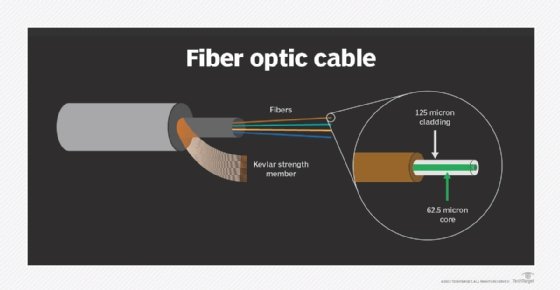What is Synchronous Optical Network (SONET)?
Synchronous Optical Network (SONET) is a North American standardized digital communication protocol for synchronous data transmission over optical fibers. In other words, SONET transmits and multiplexes multiple data streams across a fiber optic cable.
The American National Standards Institute (ANSI) developed SONET for public telephone networks in the 1980s. Today, it acts as a standard for digital networks to enable and interconnect with existing conventional transmission systems. This enables them to take advantage of optical media through tributary attachments.
Backbone carrier networks typically use SONET. Telecom operators share data over a line of fiber optic cable instead of digging trenches to bury new cables, which is a more expensive process. To multiplex the data, the network separates the cable into channels. The data transmission speed is comparable to Gigabit Ethernet speeds.
SONET components
The network elements defined in SONET include the following:
- Synchronous Transport Signal multiplexer and demultiplexer. The STS multiplexer multiplexes signals and converts electrical signals to optical ones. The demultiplexer reverses this process, condensing signals and converting optical signals back to electrical ones.
- Regenerator. The regenerator increases incoming optical signals, which enables them to travel farther.
- Add-drop multiplexer. The ADM adds or removes signals from sources.
SONET connections break down among sections, lines and paths. Sections connect two devices, while lines connect two multiplexers. Paths connect networks from end to end.
SONET also defines the following four layers:
- Path layer. Moves signals from sources to destinations.
- Line layer. Moves across cables.
- Section layer. Defines the movement of signals across cables.
- Photonic layer. Specifies optical fiber channels.

SONET standards
ANSI T1.105 and T1.117 specify SONET standards. SONET provides standards for line rates up to a maximum of 10 gigabits per second (Gbps). Actual line rates can approach 30 Gbps.
SONET's basic unit is optical carrier level 1 (OC-1), which supports up to 51.84 megabits per second. OC-3 -- the next level up -- supports up to triple the bandwidth. Each optical carrier level increases by multiples of four, e.g., OC-3, OC-12 and OC-48, all the way up to OC-768. OC-24 is the only exception.
SONET benefits
SONET has several benefits, including the following:
- High data rates, up to 40 Gbps at OC-768.
- Large transmit distances.
- Multiple data types, such as data, voice and video.
- High-level protocols, such as Ineternet Protocol.
- Interoperable infrastructure that enables organizations to use devices from multiple vendors.
One disadvantage of SONET, however, is its high cost, which could dissuade some organizations from implementing it.
SONET vs. SDH
Synchronous Digital Hierarchy (SDH) is the international equivalent of SONET, created by the International Telecommunication Union. SONET and SDH are similar standards used for the same reason, and SDH can work with SONET line rates.
However, SDH's basic unit is Synchronous Transport Module level 1 (STM-1) instead of SONET's OC levels. SONET and SDH also have different data restructuring structures. SDH frames comprise 19,440 bits and use STM, while SONET frames comprise 6,480 bits and use STS.








